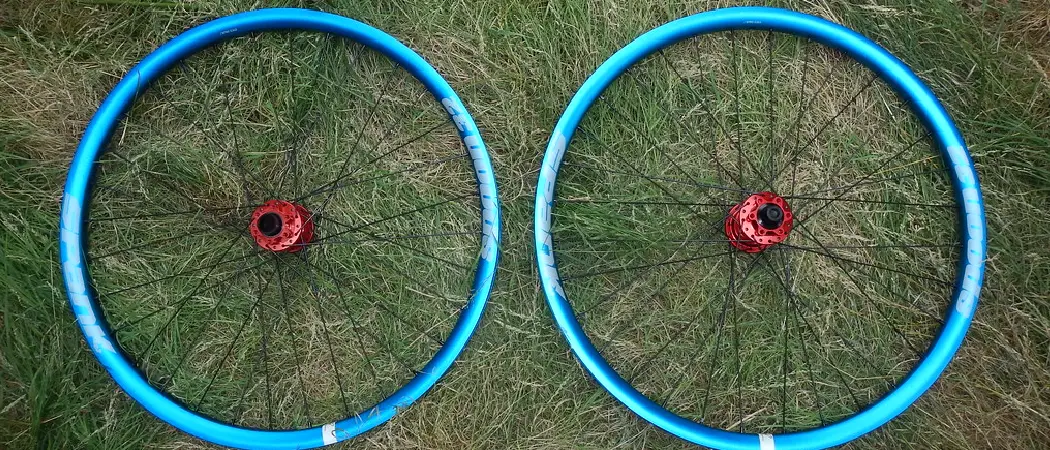
Alternative Methods
When it comes to maintaining your bike, knowing how to tighten bike spokes without a spoke wrench can come in handy, especially when you don’t have the necessary tools at hand. Here are some alternative methods for tightening bike spokes using readily available tools.
Using A Screwdriver As A Spoke Wrench
If you don’t have a spoke wrench, a flathead screwdriver can be used as an alternative tool to tighten bike spokes. Simply place the flathead screwdriver into the slot on the spoke nipple and turn it in the desired direction to tighten the spoke. Be cautious not to damage the spoke nipple or the wheel rim while using this method.
Diy Spoke Wrench Alternatives
If you’re in a pinch and don’t have a proper spoke wrench, consider using a coin or a small adjustable wrench. Place the edge of the coin or the jaws of the adjustable wrench into the slot of the spoke nipple and turn it to tighten the spoke. Ensure that the coin or adjustable wrench fits snugly into the slot to avoid slipping and causing damage. Remember to gently and gradually tighten the spokes to avoid over-tightening or causing damage to the wheel.
Preparation
Before tightening bike spokes without a spoke wrench, familiarize yourself with the steps required. Proper preparation is key to a successful adjustment process.
Gathering Necessary Tools
- Ensure you have pliers, a small adjustable wrench, and a spoke tightening tool with a compatible slot.
- Prepare a clean workspace with good lighting to easily spot loose spokes.
Identifying Loose Spokes
- Spin the bike wheel slowly to listen for any unusual noises, which may indicate loose spokes.
- Visually inspect the spokes, looking for any that appear significantly looser than the others.
Techniques
Using The Slotted Screwdriver Method
If you find yourself in need of tightening your bike spokes and don’t have a spoke wrench handy, don’t worry! There are alternative techniques you can use to get the job done. One such method involves using a slotted screwdriver. This simple yet effective method allows you to tighten your bike spokes without the need for any specialized tools.
To use the slotted screwdriver method, follow these steps:
- Begin by identifying the loose spokes on your bike wheel.
- Take a slotted screwdriver and place it in the slot of the loose spoke.
- Rotate the screwdriver in a clockwise direction to tighten the spoke. Be sure to apply gentle pressure to avoid overtightening.
- Repeat this process for each loose spoke, ensuring an even tension across the wheel.
- Check the tension of the spokes by plucking them gently. They should produce a similar sound when compared to the adjacent spokes.
Using the slotted screwdriver method may take some practice, but it can be an effective way to tighten your bike spokes when a spoke wrench is not available.
Applying Tensioning Techniques
Another technique you can use to tighten bike spokes without a spoke wrench is by applying tensioning techniques. These methods involve manipulating the tension within the spokes to achieve the desired tightness. Here are a couple of tensioning techniques you can try:
Unordered List
– Twisting Spokes: To tighten individual spokes, grab the spoke with your fingers or a pair of pliers and twist it in a clockwise direction. This twisting motion helps to increase the tension in the spoke, effectively tightening it.
– Pushing Method: Another tensioning technique involves applying pressure on the spokes towards the hub of the wheel. By pushing the spokes inward, you can increase their tension and tighten the wheel.
It’s important to note that these tensioning techniques should be used with caution. Applying too much force or over-tightening the spokes can lead to damage or a warped wheel. It’s always a good idea to check your bike’s manufacturer guidelines or consult a professional if you’re unsure about the proper tensioning techniques for your specific bike model.
These alternative techniques offer a practical solution for tightening your bike spokes when a spoke wrench is not readily available. Whether you use the slotted screwdriver method or apply tensioning techniques, remember to start with a light touch and gradually increase the tightness as needed. Regularly check the spokes’ tension and make any necessary adjustments to ensure your bike’s wheels stay true and your ride remains safe and enjoyable.
Testing And Adjustment
Start by gently squeezing pairs of spokes together to test tension. Tones should be consistent.
Use a spoke wrench or flat-head screwdriver for adjustment. Work gradually around the wheel.
Maintenance Tips
Bike spokes play a crucial role in maintaining the integrity and functionality of your bike’s wheels. Regular maintenance of spokes is essential to ensure your bike’s stability and safety. In this section, we will discuss some valuable maintenance tips for tightening bike spokes without a spoke wrench.
Regular Spoke Maintenance
Regular check-ups on your bike’s spokes are pivotal in preventing any potential issues. Follow these simple steps to ensure your spokes are well-maintained:
- Inspect the tension of the spokes by gently squeezing them together in pairs to feel for any variations.
- Use a spoke key to adjust any loose or tight spokes according to the manufacturer’s specifications.
- Spin the wheel and listen for any unusual sounds that may indicate loose spokes.
- Regularly clean and lubricate the spoke nipples to prevent corrosion and to maintain their functionality.
Indications For Professional Help
While it is possible to tighten bike spokes without a spoke wrench, there are situations where professional assistance may be necessary. Look out for these signs to know when to seek professional help:
- Severely warped or bent spokes
- Multiple broken spokes
- Consistently loose spokes
- Unusual wheel wobbling or misalignment
Safety Measures
Protective Gear
Always wear protective gear when working on your bike, including gloves and safety glasses.
Risks To Avoid
Avoid over-tightening the spokes as it can damage the wheel and lead to unsafe riding.
Be mindful of sharp edges on the spokes to prevent injuries during tightening.

